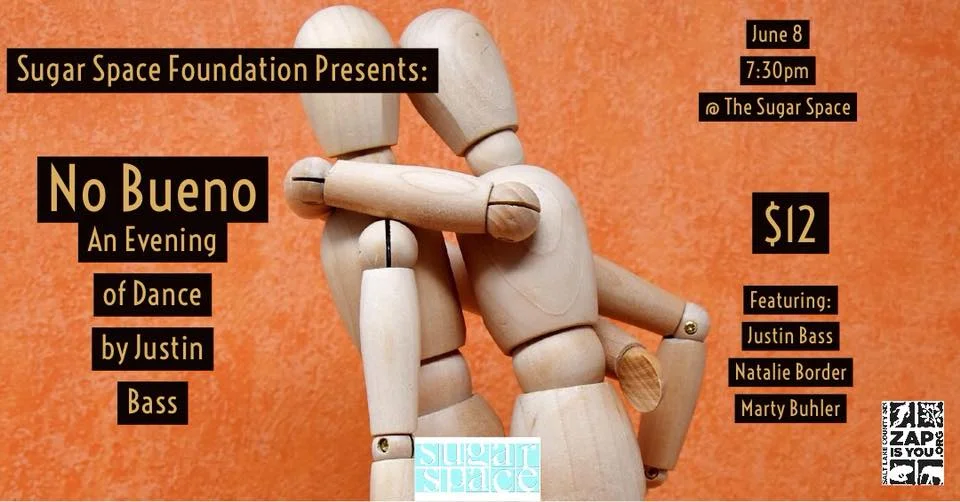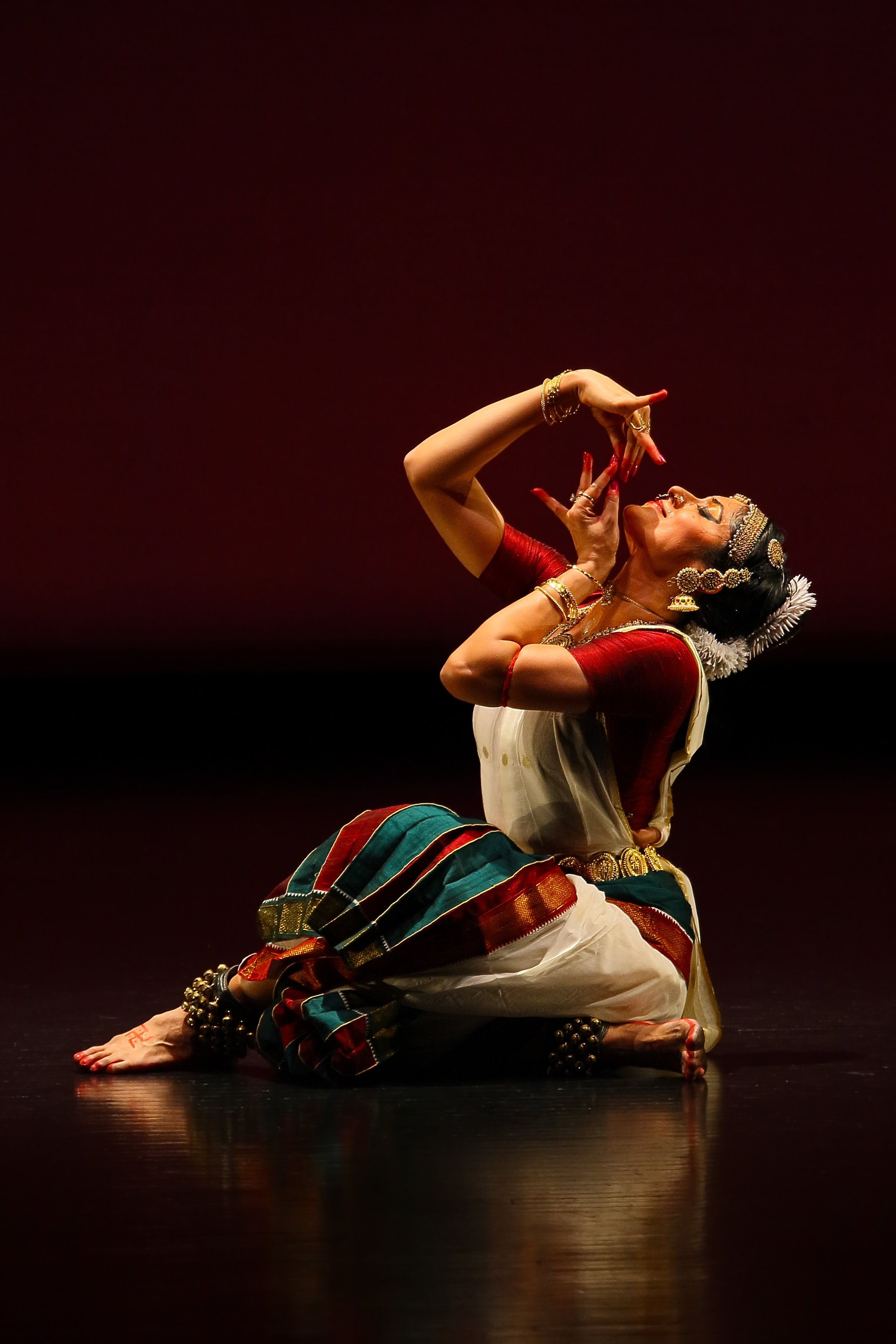The second weekend of Ballet West’s National Choreographic Festival features three pieces created by women: Jennifer Archibald’s Myoho performed by Cincinnati Ballet, Robyn Mineko Williams’s To Clear performed by Charlotte Ballet, and África Guzmán’s Sweet and Bitter performed by Ballet West. Like the first weekend of the festival, each choreographer presents a different approach to contemporary ballet, revealing a diversity of aesthetics as well as the significance of including women’s voices in ballet programming.
The director of Cincinnati Ballet, Victoria Morgan, has brought financial stability and artistic excellence to the organization during her 20-year tenure as artistic director, 8 years of which she spent in the dual role of CEO. At a panel discussion of women in leadership roles, hosted by Ballet West on May 23, Morgan said, “It’s ironic, in part, because you don’t see women in these roles, you don’t realize that you have that capability.”
Her statement speaks to the politics of representation and who has, historically, decided how women are presented and represented. Scholar and theorist bell hooks writes about how “the field of representation (how we see ourselves, how others see us) is a site of ongoing struggle.” In an essay called “In our Glory: Photography and Black Life,” hooks writes that photography was a “political instrument, a way to resist misrepresentation as well as a means by which alternative images could be produced.” In many ways the festival presented by Ballet West is another reworking of these “misrepresentations” and a place where “alternative images” of capable women are made visible and tangible.
Jennifer Archibald’s choreography exemplifies the importance of the politics of representation. Archibald was named resident choreographer of Cincinnati Ballet in 2017 and Myoho marks her fourth creation for the company (following 2014’s Sit, 2016’s Redeem, and 2017’s Never.Nest). Cincinnati’s dancers shine in her creations, which is a testament to both their talents as performers as well as Archibald’s extraordinary creativity and craft. Her choreography updates ballet’s vocabulary by intertwining elements of jazz, modern, and hip-hop with the classical vocabulary. The results are neither gimmicky nor acrobatic but rather intensely fascinating and evocative. Archibald brings ballet into the 21st century with the kind of imagination and intelligence that George Balanchine brought to ballet in the last century: sections of Myoho looked like Agon, but newly resonant. Exquisite feats of partnering and careful attention to dancers’ formations made Myoho, like Agon, a physical and emotional contest. Myoho tests the dancers’ limits and capacities, and it was incredible that, coming from Ohio the night before, they adjusted to Salt Lake City’s elevation just in time for this demanding performance.
In the panel discussion on May 23, Archibald said, “For me, when I walk into a studio I see more than dancers’ physical abilities. I am checking in with them emotionally… I look at them as humans, instead of what they execute from point A to point B. When you invest in that aspect of their humanity, I think the ensemble work is stronger and the experience is better for myself and for them.” These words sum up perfectly what happened on stage last night: the dancers combined steely strength with lightning-fast accents. Partnering sections allowed both men and women to occupy roles of resisting, relishing, and evading one another. The entire cast of ten inhabited Archibald’s movement as both a challenge and an affirmation, as if to say, “Not only can I dance this phrase, I can also add my own nuances to it.”
Two men, Cervilio Miguel Amador and James Cunningham, were fascinating in a duet that was as much a demonstration of leaning into support and interdependencies as it was a showcase for their exceptional dancing. Again, Archibald’s vocabulary enables this kind of emotional insight: she has a keen eye for both formal elements, as when couples enter the stage in similar lifts, creating a sense of dynamism and equilibrium, and for highlighting dancers’ relationships with one another. In a brilliant touch, one of the women placed her finger on a man’s lips after a virtuosic duet, as if to say, “That’s enough for the moment.”
Indeed the title of her piece can be translated as “Myo” which means mystic or wonderful, and “ho,” which means law. According to the Soka Gakkai International website, “Myoho” is “the wonder of ordinary people, beset by delusion and suffering, awakening to the fundamental law in their own lives, bringing forth wisdom and compassion and realizing that they are inherently Buddhas able to solve their own problems and those of others. The Mystic Law transforms the life of anyone—even the unhappiest person, at any time and in any circumstances—into a life of supreme happiness.”
In many ways, Archibald’s work with Cincinnati Ballet brought me supreme happiness: I spent three days in San Francisco recently for the Unbound festival of new choreography and none of the works had the nuance and vibrancy of Archibald’s. This is also a compliment to Cincinnati’s dancers: they tap into a place where they are fearless and they excel. Their costume design, by Archibald, placed the women in yellow leotards with futuristic collars that extended over the napes of their necks, suggesting the top of a cape and heightening their sense of invincibility. The score included music by Nico Muhly, Robert Honstein, and David Lang and the intertwining of instruments and machines contributed to the idea that Archibald makes ballet relevant to our digitally-enhanced 21st century.
During the panel, Archibald also said, “I love teaching and I continue to teach high school through university students. How I attack all of my classes is to not only see the star in the room. It’s important for me to see the dancer that may not be at the forefront, but has the skill level and the talent, but not the confidence to step forward. It’s important to see everyone and motivate everyone.” Based on last night’s performance, it’s clear that her choreography motivates her audiences as much as it motivates her students, and Myoho received a standing ovation.
Charlotte Ballet is now directed by Hope Muir, who trained and performed in Great Britain before joining Hubbard Street Dance Chicago (HSDC). Muir selected a work by Robyn Mineko Williams, who danced with HSDC for 12 seasons, to bring to the National Choreographic Festival. Called To Clear, the piece was a brilliant choice for the contrast that Williams’ choreography provided. Working in a more exploratory and grounded style, Williams developed scenes that evoked poetic and enigmatic interactions: the piece began with one woman standing on a folding chair, as a man, Anson Zwingelberg, walked slowly from downstage to upstage, towards her. Two technicians, working hand-held lights in the downstage corners of the stage, created shadows that duplicated their actions on the backdrop. The imagery suggested that this relationship was similar to other human interactions, and as the piece continued the cast of seven created duets, trios, and quartets that felt poignant and dream-like: in one section each cast member slid a hand around one dancer’s waist, as if about to hug or embrace them from behind, but then abandoned the gesture.
Costumes by Aimee J. Coleman contributed to the pedestrian environment, with the men and women in socks and distinct outfits, wearing long-sleeved and sleeveless tops, with pedestrian shorts, capris, and even a pant-suit. The muted tones added to the casual environment and the commissioned score by Robert F. Haynes and Tony Lazzara enriched the atmosphere with blankets of sounds that felt like they were enveloping the scenes. Actions segued seamlessly: for example, a deep lunge morphed into a turn, and then into an arabesque, allowing the momentum of each part to determine the course of events rather than lingering in any position. Zwingelberg, who graduated from Juilliard with his BFA last year, stood out among the cast of beautiful performers.
Ballet West chose África Guzmán’s Sweet and Bitter to close the program and its merger of dramatic interactions and spectacular partnering created a powerful ending. Allison DeBona and Chase O’Connell were stellar as the lead couple, and their closing pas de deux was poignant and haunting, ending with O’Connell lifting and cradling DeBona in his arms.
Katherine Lawrence, Katlyn Addison, Chelsea Keefer, Hadriel Diniz, Alexander MacFarlan, and Jordan Veit added vibrancy and playfulness to the piece, embodying the “sweet” part of Guzman’s title. The women especially lingered in balances as if savoring the movement and this added allure to their performances. Guzmán’s choreography, a fusion of theatricality and physical feats, evokes a lineage of European ballet-makers like Nacho Duato (who Guzmán worked with for 20 years) and Jiří Kylián, and was complemented by a score by Ezio Bosso, which combined both driving and demure sections.
During the panel, Guzmán acknowledged the importance of powerful women in her career, such as Maya Plisetskaya, her first director, and Hope Muir added similar observations. Great Britain, said Muir, is “quite a small island. Ninette de Valois founded the Royal Ballet and Marie Rambert started Ballet Rambert, which is the oldest company in Britain, and one that I was fortunate to dance with... Now you’ve got National Dance Company Wales with a female director [Caroline Finn] and Scottish Dance Theatre has a female director [Fleur Darkin] and there’s Tamara Rojo at English National Ballet.” For Muir, such examples of women in leadership roles led her to believe “it was possible,” a statement that contrasts with Morgan’s observation about seeing so few female directors during her performing career.
The French philosopher Jacques Rancière presents a theory that explains these observations: it’s called “the distribution of the sensible,” which means we can only see or “sense” those ideas that have been presented or framed for us. As a result, aesthetic approaches are deeply entwined with politics, and those works deemed “good” or “valuable” are supported by particular regimes of seeing and thinking. Another way of stating this idea is that aesthetic choices are also political choices: when we support the voices and ideas of people who are not equitably represented, we are enriching our knowledge of the world we live in.
What the National Choreographic Festival makes abundantly clear is that female choreographers are a vital part of our ballet landscapes. While the festival presents a vibrant spectrum, I believe there are still more artists to include. Salt Lake City is home to several distinguished dance-makers, including Penny Saunders, who just premiered an acclaimed full-length for Grand Rapids Ballet, and Melissa Bobick, who was selected for this summer’s prestigious Choreographic Institute at the University of North Carolina, School of the Arts, which is led by another vital female leader, Susan Jaffe.
As Morgan said during the panel discussion, “I might say confidence is important, but then I realize I didn’t feel confident when I stepped into these roles. I think it’s interesting that there’s this theme of recognizing the potential of dancers who are around you. It’s not always necessarily about confidence, but a lot about being vulnerable and creating relationships where dancers feel safe. The ability to generate that kind of atmosphere in a studio is essential.” As this festival proves, it’s also essential to generate support and opportunities for these women who are keeping ballet real.







